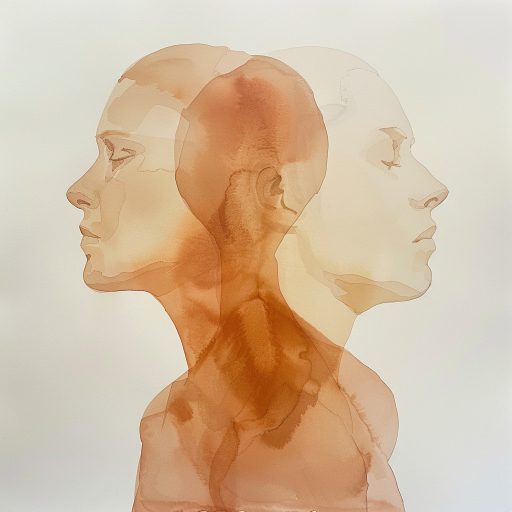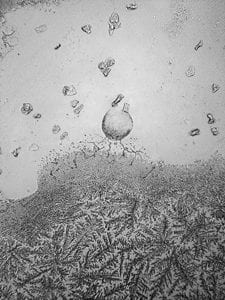
Bipolar Disorder: Symptoms, Treatment and How to Get Help
You've probably heard of bipolar disorder, or manic depression as it used to be called, but what exactly is it? The main symptoms experienced by people with bipolar disorder are extreme mood swings. These mood swings occur in episodes that alternate between energetic peaks, called mania or hypomania, and debilitating troughs, or depressions. They make it difficult to think clearly and also have far-reaching consequences for daily life. Maybe you know someone with bipolar disorder that you want to understand better, or maybe you just want to learn more. Either way, this post will give you a comprehensive introduction to bipolar disorder.

What are the symptoms of bipolar disorder?
At the broadest level, bipolar disorder manifests itself in two ways, called Bipolar type 1 and Bipolar type 2. Both scenarios include the aforementioned mood swings. Bipolar type 1 is characterized by manic episodes that last at least a week and require hospitalization. In Bipolar type 2, the mania is less intense and is called hypomania, literally "under-mania". These hypomanic episodes alternate with periods of severe depression, which is the hallmark of Bipolar type 2.
What is a manic episode like?
But what is it like to experience it? mania, hypomania or depression? The experience of mania varies from person to person. Some symptoms may even seem desirable to someone without the disorder. Who doesn't want to feel overly happy and energetic? And many of us struggle to get enough sleep, wouldn't it be nice to need less sleep too?
For someone experiencing a manic episode, the experience of energetic wakefulness is extreme and unbalanced. In the grip of mania, the relative slowness of other people and the world around can seem unbearably irritating. Feeling constantly energized can make it difficult, if not impossible, to rest or engage in activities that require patience and attention. People experiencing mania often speak very quickly, and change the subject at a rapid pace. The experience of mania also involves difficulties in making good decisions: During a manic episode, a person may be unrealistically confident in their actions, or engage in unusually risky behaviour. The symptoms of hypomania similar to mania, only less intense and short-lived.
What is a depressive episode like?
The experience of depression is the polar opposite of mania, hence the name "bipolar disorder". As with mania, each individual's experience of depression is unique, with some symptoms occurring more frequently than others. People experiencing a depressive episode may feel deeply sad for a long period of time or find themselves crying without understanding why. They may find it difficult to eat and sleep, or experience problems maintaining regular routines. Many people report that activities they once enjoyed no longer bring them joy. During a depressive episode, feelings such as irritability, anger, worry and restlessness are also common. Some people experience persistent feelings of guilt and worthlessness, or often think about death or suicide.

What causes bipolar disorder?
The exact causes of bipolar disorder are currently not fully understood. However, there is evidence that certain factors play a significant role in the development of bipolar disorder. One such factor is genetics: there is evidence that people with a family history of bipolar disorder are at increased risk of developing it themselves. Another factor is the external environment: For people who already have a genetic predisposition, environmental stressors can increase the risk of developing bipolar disorder. Examples of stressors include living in a high-stress environment, being exposed to traumatic events or having an abusive relationship with drugs and alcohol. Recent developments in brain scanning technology have also revealed a third factor: There is evidence that the brains of people with bipolar disorder differ structurally from the brains of people without the disorder.
Who is affected by bipolar disorder?
Bipolar disorder is relatively common, with about 1 in 100 people experiencing it at some point in their lives. Symptoms of the disorder usually appear between the ages of 15 and 30, and both sexes are affected. Women are more likely to experience rapid switching between episodes or mixed episodes with both manic and depressive symptoms. Men are more likely to develop symptoms at a younger age and tend to experience more mania than women.
As mentioned above, genetics play a role in the development of bipolar disorder. People who have a first-generation relative with the disorder are most at risk. Socioeconomic status also plays a role in the development of bipolar disorder: it affects which environmental stressors a person is exposed to, and the type of treatment they have access to. Finally, culture is also linked to the development of bipolar disorder. Cultural stigma or lack of awareness can hinder diagnosis, and the disorder can become more severe in the absence of proper treatment.

Treatment of bipolar disorder
There are four main approaches to treatment, all of which support each other. The first approach is treatment with medication. It includes the use of mood stabilizers, antipsychotic medications and antidepressants. These medications aim to reduce the intensity of bipolar symptoms and improve the effects of other treatment approaches, such as psychotherapy. Bipolar disorder creates many challenges, both for those who experience it and for those who live with them. Psychotherapy provides support and guidance that can make life with bipolar more manageable.
The third approach to treatment concerns lifestyle and routines. Research shows that the disorganized lifestyle and self-care that often accompanies bipolar disorder can exacerbate symptoms. Helping people establish regular sleep patterns, a healthy diet and physical exercise can help manage symptom intensity. The final approach to treating bipolar disorder is education. For people with bipolar disorder and their environment, knowledge is key. Although we may not fully understand how the disorder occurs, there is still a wealth of knowledge about how to live with it. Access to this knowledge can help individuals manage their symptoms, reduce feelings of alienation, and facilitate informed treatment decisions.
What is the prognosis for those with bipolar disorder?
The outlook varies widely from individual to individual. Early diagnosis is important to ensure access to the right treatment and support. Treatment effectiveness is also variable and closely linked to the long-term prognosis. Some people may be highly motivated to treat their disorder and find it easier to commit to a treatment program, while others may find it more challenging to adapt to structured treatment. Despite this variability, many people with bipolar disorder benefit from the combination of appropriate medication and regular psychotherapy. These people can experience both mood stabilization and symptom reduction, making it easier for them to live meaningful and fulfilling lives.
Get help
Living with bipolar disorder or someone who has it can be very challenging. If you need someone to talk to, you can book an appointment via the link below. Our therapists are experienced, competent and ready to listen to your story.







